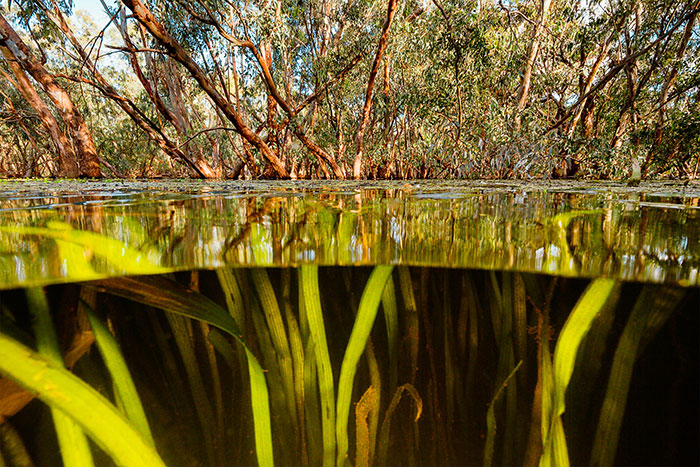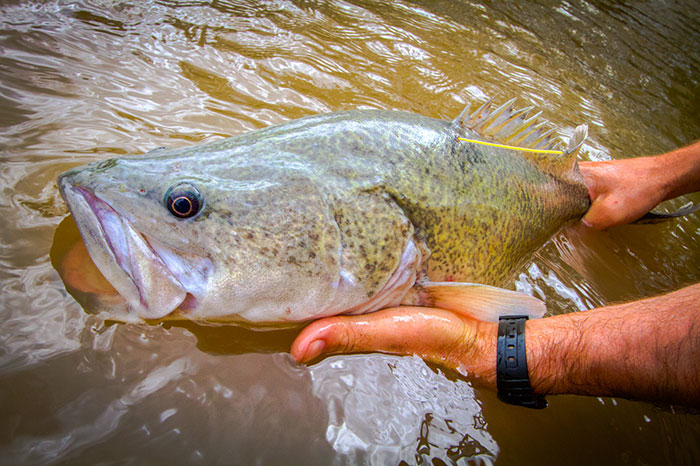About
Since July 2016, the Department of Agriculture, Fisheries and Forestry (DAFF) and Fisheries Research and Development Corporation (FRDC) have undertaking a world-first program to assess the feasibility of using Cyprinid herpesvirus 3 (the carp virus) as a biological control agent for introduced common carp in Australia, as part of the National Carp Control Plan (NCCP). In January 2020, FRDC delivered its assessment for consideration by government.
It was determined that further research was required before FRDC could commence integrating all the peer reviewed research and planning investigations into a single document. This integration and the development of the NCCP was undertaken during 2022. The NCCP will help facilitate assessment and consideration of the carp virus’s potential as a biocontrol agent. FRDC has now completed integrating the data into the final NCCP and was submitted to the Australian Government at the end of September 2022 with final QA and web accessibility on the documents being undertaken before it is expected to be released in November 2022.
The NCCP is the first step of several important stages and governments will seek advice and consider the NCCP in detail before deciding on next steps. Other critical work needed to inform any further activity will likely include public consultation, legislative approvals and understanding future implementation requirements, but this will be up to the Australian Government to determine. As such, the timing on any decision on a carp biocontrol is still to be determined.

Background
Carp are one of Australia’s most significant pest species. They were introduced to Australia in the mid-19th century, and are now the dominant large-bodied fish in most Murray-Darling Basin (MDB) waterways. The species is also abundant in many eastern coastal rivers and isolated populations occur in Western Australia. Ecological impacts attributed to carp in Australian ecosystems include decreased water clarity, destruction of aquatic plants that provide food and habitat for native species, and food chain domination.
Biological control using Cyprinid herpesvirus-3 (CyHV-3, or ‘the carp virus’) offers the potential to control carp effectively over large areas. Before any decision to release a virus is made, it is important to investigate questions of feasibility:
- Will biocontrol using the carp virus be effective?
- What are the risks associated with carp biocontrol and how can they be managed?
- How could carp biocontrol be implemented?
To address these questions, the National Carp Control Plan, funded by the Australian Government, coordinated a $10.37 million planning process, the most intensive investigation ever devoted to a biological control agent before its possible release.

The National Coordinator Terms of Reference can be found here.
The task of addressing the feasibility questions was complex, given the scale of the project, the sheer biomass of carp in our waterways, the overlapping environmental, economic, social and cultural factors, and the amount of legislation carp control, touches.
To guide the process, an experts were enlisted including, the Science Advisory Group, the Policy Advisory Group and the Operations Working Group. The experts’ role was to provide advice, guide decision-making and oversee the NCCP. Working groups were established in collaboration with the Department of Agriculture, Water and the Environment’s Environment and Invasives Committee (formerly Invasive Plants and Animals Committee) to provide input into communication and engagement activities and contribute to development of the NCCP. FRDC provided secretarial support to these groups.
Science Advisory Group
The Science Advisory Group (SAG) provided scientific advice on knowledge gaps and key risks.
The SAG comprised nominated representatives from all affected states and territories with collective expertise in aquatic ecology, fish virology/epidemiology, water management, social science and human health.
The group was instrumental in developing the Strategic Research and Technology Plan (SRTP). While research priorities necessarily evolved during the life of the plan in response to the research, collaboration and advisory processes, the STRP provided the starting point for the NCCP to begin investigations to underpin informed decisions on carp control.
The group included members from the following organisations:
- Queensland Dept. of Agriculture and Fisheries
- CSIRO Australian Animal Health Laboratories
- Primary Industries and Regions SA – SARDI Aquatic Sciences
- NSW DPI Fisheries
- Department of Agriculture and Water Resources
- Arthur Rylah Institute
- Office of Health Protection, Australian Government Dept. of Health
- The University of Adelaide
- ACT government
- Panaquatic Health Solutions
- University of Tasmania – Institute of Marine and Antarctic Studies
- Department of Science, Information Technology and Innovation
- School of Life and Environmental Sciences, University of Sydney
- Tasmanian Inland Fisheries Service
- Aquaculture and Aquatic Biosecurity Branch, Department of Fisheries WA
Operations Working Group
The Operations Working Group (OWG) comprised ‘state leads’ with expertise in water infrastructure, natural resources, agriculture, biosecurity, tourism, health and transport, plus relevant NCCP researchers.
The group provided planning support and contributed to the development of detailed strategies for a potential release of the carp virus and subsequent clean-up.
The group included members from the following organisations:
- Commonwealth Environmental Water Office
- Department of Industry, Innovation and Science
- Department of Agriculture and Water Resources
- Victorian Fisheries Authority
- NSW Department of Primary Industries
- Department of Primary Industries and Regions, South Australia
- Freshwater Pest Fish, Biosecurity Queensland
- ACT Government
- Murray Darling Basin Authority
- Elizabeth Macarthur Agriculture Institute
Policy Advisory Group
The Policy Advisory Group (PAG) provided policy and legislative advice.
The PAG comprised nominated representatives from all affected states and territories, with collective expertise in biosecurity, water and natural resource management, fisheries and environmental assessment.
A key task for the PAG has been identification of legislation relevant to carp control and co-ordination of approvals.
The role of the PAG has been taken over by Environment and Invasives Committee (formerly IPAC) which integrated NCCP planning and regulatory considerations into Australia's existing national biosecurity framework.
Communications Working Group
The Communications Working Group (CWG) comprised communication managers from environment and natural resource agencies and organisations with expertise in fisheries, pest management, river operations and extension.
The group contributed to the successful engagement of the Australian community about carp impacts and control.
The group included members from the following organisations:
- Murray Darling Basin Authority
- Victorian Fisheries Authority
- Primary Industries and Regions SA
- Department of Agriculture & Water Resources
- ACT Government
- Centre for Invasive Species Solutions
- CSIRO
- University of Canberra
- Natural Resources South Australia
- Murray Darling Association Inc.
- Dept. of Agriculture and Water Resources
- New South Wales Department of Primary Industries
Contact and more information
For questions on specific science and research outcomes please contact carpscience@frdc.com.au
For more information visit https://www.agriculture.gov.au/biosecurity-trade/pests-diseases-weeds/pest-animals-and-weeds/national-carp-control-plan.






